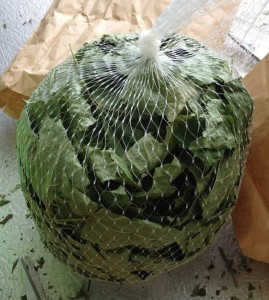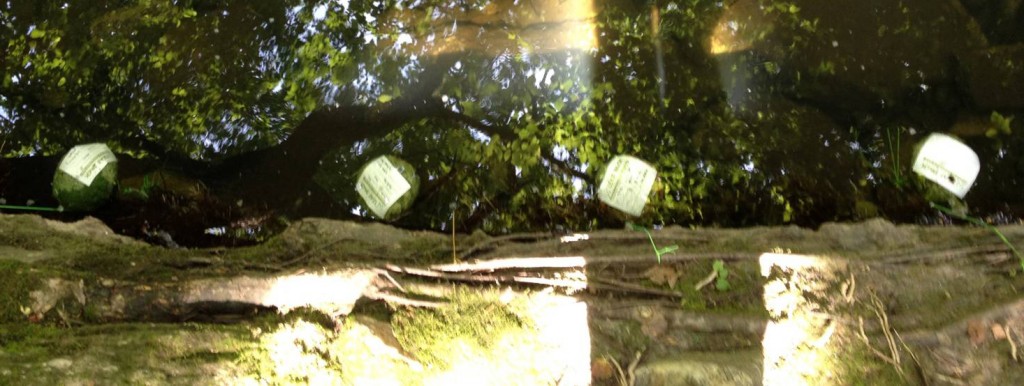Testing the Waters
Posted in Science on July 18 2013, by Owen Robinson
A recent graduate from Pelham Memorial High School, Owen Robinson worked as a volunteer Forest Intern at the NYBG in the summer of 2012. He will begin as a freshman at the University of Virginia this fall, where he hopes to continue his pursuit of science research as a part of the Echols Scholar Program.

Last summer I conducted a project to determine whether or not invasive trees are negatively impacting aquatic macroinvertebrate populations. Aquatic macroinvertebrates are small, invertebrate insects that play essential roles in their ecosystems, acting as an energy bridge between outside plant life and the rest of their aquatic environment. They do this by breaking down tree leaves.
Invasive trees are an established and worsening problem in our region, one that impacts plant biodiversity as well as some mammalian and avian populations. As little research has been dedicated to my particular focus, I wanted to determine whether the leaves from these invasive trees were less beneficial to aquatic macroinvertebrate populations than the leaves of native trees. If this proved the case, there would be reason to work harder against the takeover of invasive plant species.
To test whether or not invasive trees are less conducive to healthy macroinvertebrate populations, I constructed leaf packs that allowed macroinvertebrate colonization when placed in water. The packs mirrored what theoretically occurs in a stream or river when leaves fall into the water; when the leaves are deposited in running water, they tend to group together and form “natural” leaf packs as they encounter obstacles. I constructed four types of leaf packs, each containing 30 grams of leaves from a different tree species. Of the three containing invasive specimens, I chose Tree of Heaven, Norway maple, and knotweed; the fourth native control pack contained equal measures of American beech, red oak, and sweetgum leaves.
While knotweed is not, in fact, a tree, this Japanese shrub forms monocultures in riparian zones, meaning it blocks out the growth of all other plants along the streams or rivers it colonizes. It acts just like a tree in this case because of the similar amounts of leaf litter it puts into these aquatic environments.

After putting a total of 13 sets of leaf packs—or 52 packs total—into the Bronx River and letting them sit for three weeks, I analyzed the macroinvertebrate colonization and conducted statistical tests to determine which packs fostered the healthiest populations. In the end, I found that populations were more diverse in the native leaf packs, and at statistically significant levels and with more consistently high yields of macroinvertebrates. In other words, this data strongly suggests that invasive trees are not only impacting land species negatively, but possibly entire aquatic ecosystems.
I have presented my work at the Garden in several science competitions that exhibit research from around the country, and most recently at the Westchester Science and Engineering Fair, where I was awarded the Momentive Performance Materials Innovation Award and fourth place in the Environmental Science category. It’s awesome that this research, which I poured so much hard work and love into, was recognized and received with such high praise. I’m really glad I had the opportunity to intern at The New York Botanical Garden, and look forward to this fall when I attend the University of Virginia through the Echols Scholar program. Once there, I hope I will have similar opportunities for more exciting research.


This is a particularly timely, fascinating, and urgent area of study and your thoughtful and creative implementation of the experiment is impressive indeed! Congratulations on the awards you have received for your work and, hopefully it will lead you to continue your involvement and study of the impact of invasives on our aquatic populations and on our environment. Bravo!